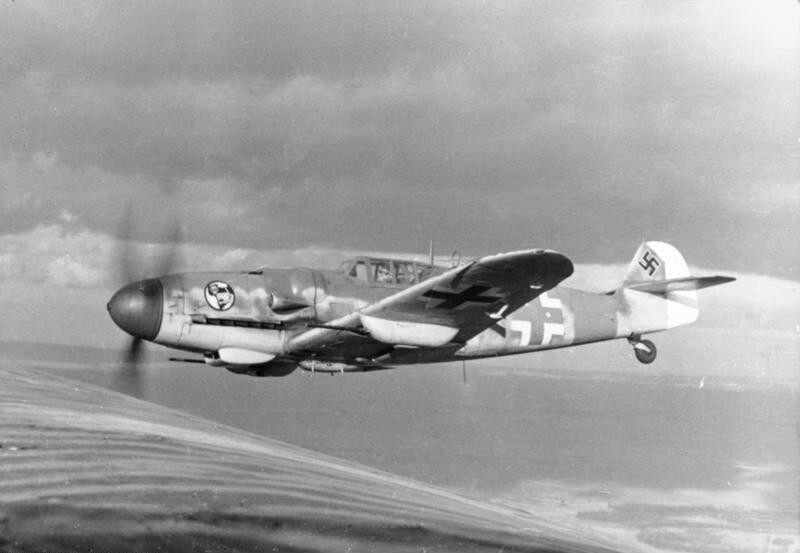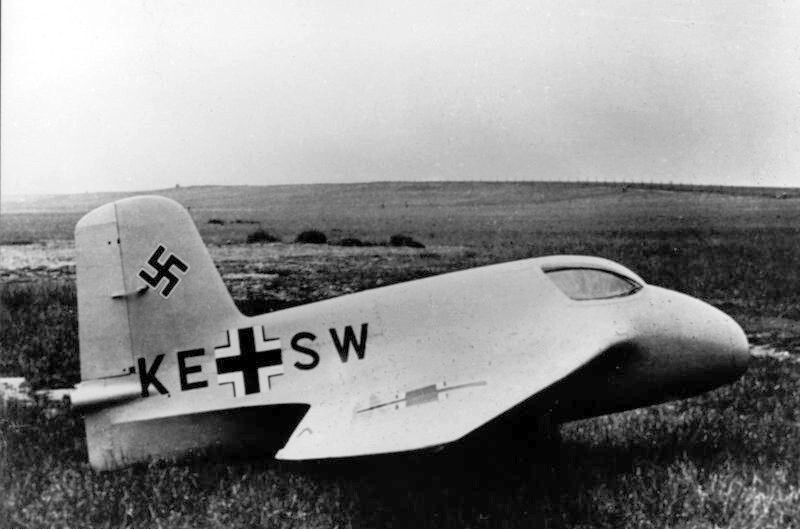Nazi Germany
Messerschmitt BF-109
Originally designed in 1934, the BF-109 quickly became the German's most widely used aircraft. By 1937, the original BF-109 was upgraded to the BF-109E, equipped with a Daimler-Benz DB601 engine which yieleded 1,000-horsepower. With the increased power, the Germans were also able to arm it with "two wing-mounted 20-mm (0.8-inch) automatic cannons and two machine guns in the engine cowling," (Britannica). The BF-109E became the backbone of the Luftwaffe, serving as the "principal German fighter from the invasion of Poland in 1939 through the Battle of Britain (1940–41)". The BF-109 had a top speed of 350 miles (570 km) per hour, and a ceiling of 36,000 feet (11,000 metres).
Messerschmitt-163 Komet
The Messerschmitt-163, on the other hand, did not have a significant impact on German the war efforts, although it made use of a revolutionary design. Using a hydrogen peroxide compound called T-Stoff, the Me-163, nicknamed the "Komet", was the first aircraft to make use of rocket propulsion. However, its use of such avant-garde technology made the Komet a dangerous plane to fly, and many German pilots and engineers lost their lives during testing. For example, in one infamous incident, Josef Pohs of the Luftwaffe was testing the Komet when, shortly after takeoff, the fuel line containing the propellant ruptured. By the time the plane had landed again, the leaking T-Stoff had almost completely dissolved the pilot inside.
Top Speed: 959 Km/H. Ceiling: 12,000 m. Very limited flight duration.

